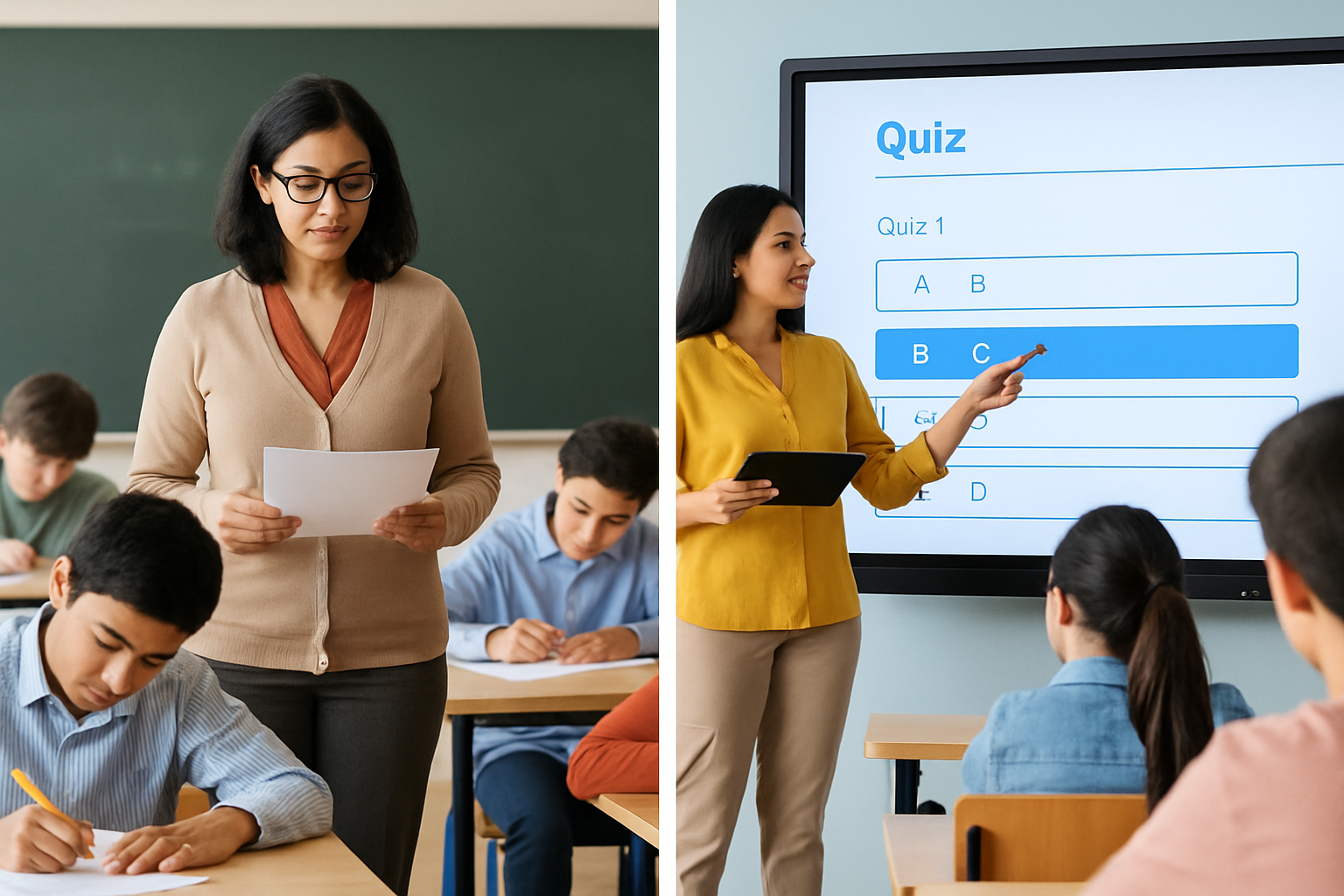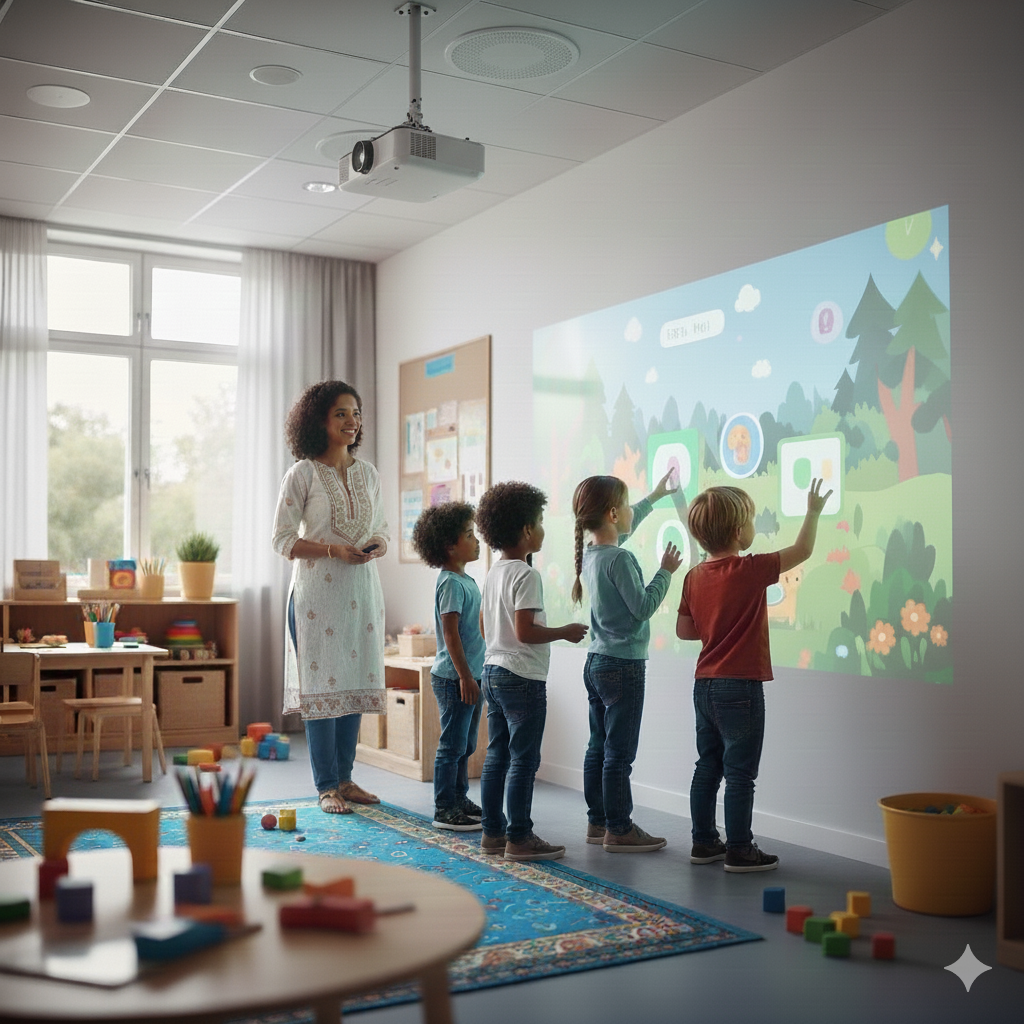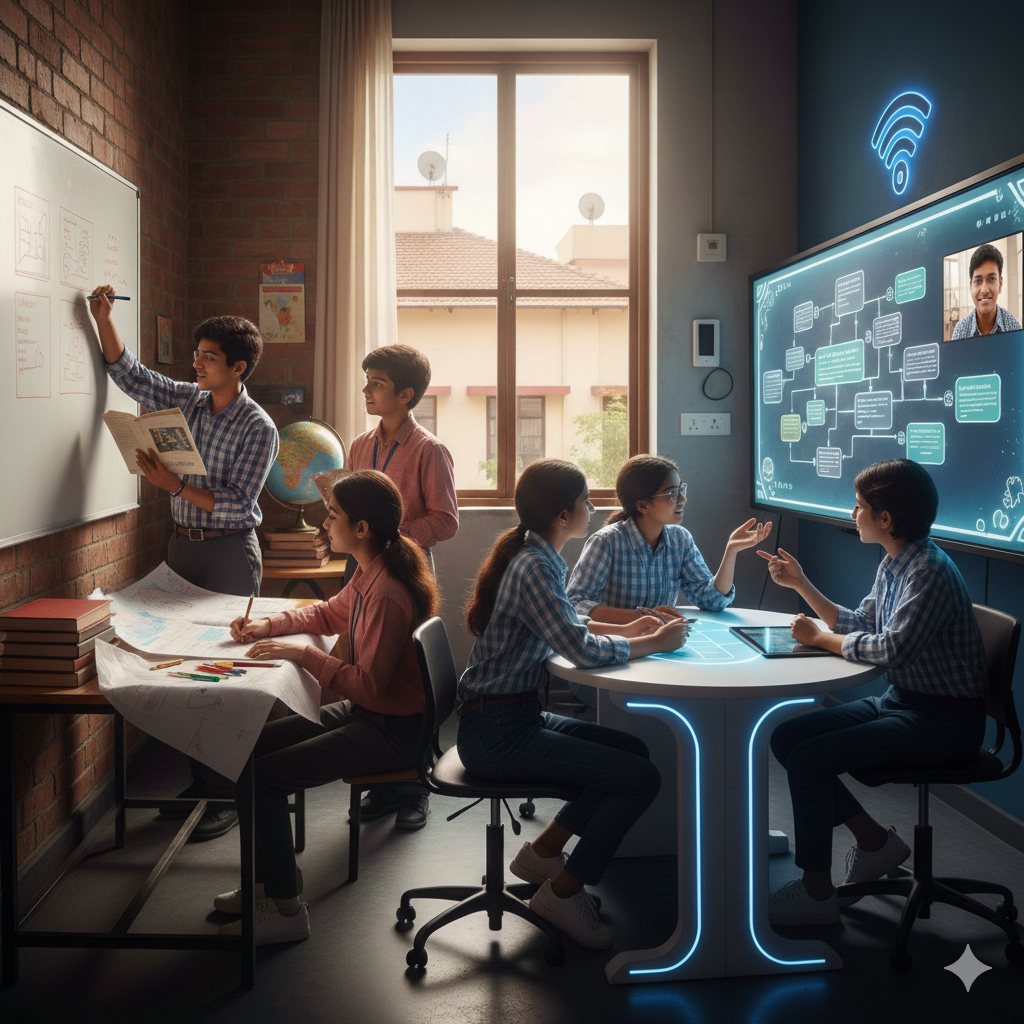Traditional vs Digital Classroom Assessment: What Educators Must Know

In education, what we choose to measure and how we measure it shapes everything. Assessment isn't just about marks. It's about understanding how students think, learn, and grow. For decades, exams on paper were the gold standard. But now, with schools embracing digital classroom setups, the way we evaluate learning is getting a much-needed update.
Across India, more classrooms are moving toward interactive boards, cloud-based platforms, and smart content delivery. Naturally, assessment is following suit. While traditional tests still hold their place, digital assessments are offering speed, flexibility, and a better view into student understanding. The real question isn’t whether one is better. It’s how each fits into the future of teaching.
What Is Traditional Assessment?
Ask any teacher or student what a typical test looks like, and the answers will be nearly identical. Traditional assessment usually involves:
- Printed question papers
- Fixed-time written exams
- Teacher-corrected answer sheets
- Once-a-term test evaluations
This system is straightforward. It’s been around for generations and is still the backbone of most Indian board exams. But while it brings consistency, it also comes with familiar bottlenecks—delayed feedback, surface-level evaluation, and often, a one-size-fits-all approach.
For many schools, these methods are still the default. But in classrooms that are evolving with tech, they’re starting to feel limiting.
What Is Digital Classroom Assessment?
When a classroom goes digital, assessment doesn't just move online, it transforms. Digital classroom assessments go beyond uploading a test on a screen. They include:
- Interactive questions embedded into lessons
- Auto-evaluated quizzes and instant grading
- Visual and audio-based submissions
- Learning dashboards for real-time progress tracking
Inside a digital smart classroom, these assessments are part of a larger system. Teachers can launch a quick quiz mid-lesson to check comprehension. Students can submit voice notes or short videos in place of a paragraph. And parents? They get weekly updates, not just report cards twice a year.
The key advantage isn’t just efficiency, it’s depth. These tools help teachers see what’s working, what’s not, and adjust while it still matters.
Traditional vs Digital Assessment: 6 Key Differences
This isn’t about replacing paper with pixels. It’s about widening the lens. Traditional tests show how a student performed on one day. Digital assessments reveal how they’re learning over time.
Why Digital Assessment Makes Sense Today
1. Real-Time Insights for Teachers
Imagine being able to see which students are falling behind before the final exam. That’s what digital assessment enables. Teachers get quick snapshots of learning gaps during the lesson itself—not weeks later.
2. More Ways to Measure Learning
Every student learns differently. Some are great writers. Others express better through visuals or voice. In a traditional setup, this nuance is lost. With digital tools, students can show what they know in ways that work for them.
3. Fewer Admin Tasks, More Time for Teaching
No piles of exam sheets. No tallying marks manually. When a platform grades for you, you reclaim hours that can be spent on lesson design, mentoring, or individual support.
4. Personalized Learning Paths
When teachers can see question-level data across a class, they don’t have to guess who needs help. Instead of teaching to the average, they can teach to the need.
This is what makes digital assessment not just faster, but smarter.
Challenges Still Exist
That said, the shift isn’t plug-and-play. Schools need the right digital infrastructure. Teachers need time to learn new platforms. And not all assessment tools are created equal. Some overwhelm more than they support.
Privacy also becomes a concern. Institutions must be sure that student data is secure, and platforms are compliant. Roombr, for example, addresses this with built-in privacy settings and secure file sharing in its digital classroom setup.
The good news? Once the systems are in place, the learning curve levels off. And the benefits far outweigh the early hurdles.
How Indian Schools Are Using Both
In many Indian classrooms today, a blended model is taking shape. Teachers might use digital quizzes for daily feedback and go back to paper for term-end exams. This hybrid setup helps maintain familiarity while gradually introducing change.
Some progressive schools have fully integrated platforms like Roombr, where digital collaboration in classrooms includes not just teaching but continuous assessment, live lesson recording, and auto-saved test files for review.
At the same time, boards like CBSE are exploring competency-based assessments, nudging institutions toward more formative evaluation styles—something digital systems support better than rigid testing formats.
What to Look for in a Digital Classroom Setup
If your school is planning to transition, don’t just buy software. Look for solutions that are:
- Easy for teachers to use, without constant tech support
- Plug-and-play in existing classrooms
- Designed to support feedback, not just marks
- Integrated into teaching, not separate from it
A good digital classroom solution should let you teach, engage, evaluate, and share—all from one system. That’s where Roombr shines. With dual cameras, auto-recorded sessions, built-in quizzes, and real-time sharing, it turns every class into a learning loop—not just a lecture.
Final Thoughts
There’s no need to discard traditional assessments entirely. They serve a purpose, especially in structured evaluations. But to prepare students for the world they’re entering—collaborative, digital, fast-moving—we need tools that reflect that reality.
Digital classroom assessment isn’t a replacement. It’s an upgrade. It supports deeper learning, better visibility, and quicker action. And in the long run, it helps teachers teach better and students learn smarter.
Discover how Roombr simplifies digital classroom setup for different educational institutions.
Foziya Abuwala
Share
Step Into the future of
Education with Roombr

















